
Gyeongju Historic Areas: The Heart of Ancient Korea
Experience the timeless beauty and historical richness of Gyeongju, South Korea's ancient capital and a treasure trove of cultural heritage.
Nestled in the southeastern corner of South Korea, Gyeongju Historic Areas offer a captivating journey back in time to the days of the Silla Kingdom. Once the capital of this ancient realm, Gyeongju is often referred to as the 'museum without walls' due to its rich tapestry of archaeological wonders, historical sites, and cultural treasures. The city is dotted with royal tombs, ancient temples, and stone pagodas, each telling a unique story of Korea's storied past. A visit to Gyeongju is incomplete without exploring Bulguksa Temple, a masterpiece of Buddhist art and architecture. Designated as a UNESCO World Heritage Site, this temple boasts intricate stonework and serene landscapes that reflect the spiritual essence of the Silla era. Nearby, the Seokguram Grotto houses a majestic statue of Buddha, offering panoramic views of the East Sea and a tranquil atmosphere for contemplation. Another highlight is the Gyeongju National Museum, where you can delve deeper into the region's history through its extensive collection of artifacts, including golden crowns, pottery, and ancient texts. For a more immersive experience, roam the grounds of Tumuli Park, where grassy mounds conceal the tombs of Silla kings and nobles. As you wander through this serene park, you'll feel a profound connection to the lives and legacies of Korea's ancestors.
Local tips in Gyeongju Historic Areas
- Wear comfortable shoes, as you'll be doing a lot of walking to explore the various historical sites.
- Visit in spring or autumn for the most pleasant weather and to enjoy the beautiful cherry blossoms or autumn foliage.
- Consider hiring a local guide to gain deeper insights into the historical significance of the sites.
- Try local delicacies like 'Hwangnam-ppang' (a traditional pastry) and 'Ssambap' (lettuce wraps) to get a taste of Gyeongju's culinary heritage.
- Rent a bike to easily navigate between sites, as many attractions are spread out across the city.
Gyeongju Historic Areas: The Heart of Ancient Korea
Nestled in the southeastern corner of South Korea, Gyeongju Historic Areas offer a captivating journey back in time to the days of the Silla Kingdom. Once the capital of this ancient realm, Gyeongju is often referred to as the 'museum without walls' due to its rich tapestry of archaeological wonders, historical sites, and cultural treasures. The city is dotted with royal tombs, ancient temples, and stone pagodas, each telling a unique story of Korea's storied past. A visit to Gyeongju is incomplete without exploring Bulguksa Temple, a masterpiece of Buddhist art and architecture. Designated as a UNESCO World Heritage Site, this temple boasts intricate stonework and serene landscapes that reflect the spiritual essence of the Silla era. Nearby, the Seokguram Grotto houses a majestic statue of Buddha, offering panoramic views of the East Sea and a tranquil atmosphere for contemplation. Another highlight is the Gyeongju National Museum, where you can delve deeper into the region's history through its extensive collection of artifacts, including golden crowns, pottery, and ancient texts. For a more immersive experience, roam the grounds of Tumuli Park, where grassy mounds conceal the tombs of Silla kings and nobles. As you wander through this serene park, you'll feel a profound connection to the lives and legacies of Korea's ancestors.
When is the best time to go to Gyeongju Historic Areas?
Iconic landmarks you can’t miss
Cheomseongdae Observatory
Discover Cheomseongdae Observatory, the ancient symbol of Korea's astronomical heritage, nestled in the historic heart of Gyeongju.

Donggung Palace & Wolji Pond
Discover the historical elegance of Donggung Palace and Wolji Pond, a serene landmark showcasing Silla Dynasty architecture amidst tranquil gardens.

Bulguksa Temple
Explore Bulguksa Temple, a UNESCO World Heritage site in Gyeongju, where stunning architecture meets serene natural beauty.

Gyeongju National Museum
Discover the ancient treasures of the Silla Kingdom at Gyeongju National Museum, where history and culture come alive in a captivating setting.

Gyeongju World
Experience the thrill of Gyeongju World, a unique theme park blending adventure and Korea's rich cultural heritage for an unforgettable family outing.

Woljeonggyo Bridge
Explore the breathtaking Woljeonggyo Bridge in Gyeongju, a stunning fusion of tradition and nature that enchants every visitor.

Seokguram Grotto
Discover the serene beauty and historical significance of Seokguram Grotto, a UNESCO World Heritage site that showcases the artistry of Korean Buddhism.

Hwangnidan-gil
Discover the enchanting blend of tradition and modernity at Hwangnidan-gil, Gyeongju – a must-visit destination for every traveler.

Gyeongju Gyochon Traditional Village
Explore the enchanting Gyeongju Gyochon Traditional Village, a captivating destination that showcases Korea's rich cultural heritage and history.

Hilton Gyeongju
Experience luxury and history at Hilton Gyeongju, your gateway to Korea's ancient treasures and modern comforts.

Cheonmachong
Explore Cheonmachong, an ancient tomb of the Silla Dynasty in Gyeongju, a UNESCO World Heritage site rich in history and cultural significance.

Daereungwon Tomb Complex
Discover the ancient secrets of Korea at the Daereungwon Tomb Complex, where history and nature beautifully intertwine.

Yangdong Folk Village
Discover the timeless beauty of Yangdong Folk Village, a UNESCO World Heritage site showcasing Korea's rich cultural and historical heritage.

Daldongnae of Old Times
Discover the charm of Korea's bygone era at Daldongnae of Old Times, where history, culture, and tradition come alive in Gyeongju-si.

Gyeongju Tower
Explore Gyeongju Tower, where panoramic views meet rich history in the heart of South Korea's ancient capital.

Unmissable attractions to see
Homigot Sunrise Square
Discover the beauty of Homigot Sunrise Square, where breathtaking sunrises and iconic sculptures create a perfect coastal retreat in Pohang-si, South Korea.

Amethyst Cavern Park
Explore the enchanting Amethyst Cavern Park in Ulsan, South Korea, where nature's beauty and thrilling attractions await every visitor.

Ganwoljae Flame Grass Road
Discover the natural splendor of Ganwoljae Flame Grass Road in Ulsan, South Korea, a stunning hiking destination with breathtaking views and vibrant landscapes.

Daldongnae of Old Times
Discover the rich cultural heritage of Korea at Daldongnae of Old Times in Gyeongju-si, where tradition meets experience.

Bunhwangsa Temple and Stone Brick Pagoda
Explore the serene Bunhwangsa Temple and its iconic Stone Brick Pagoda, a cultural treasure in Gyeongju, Korea's ancient capital.

Tomb of King Muyeol of Silla
Explore the Tomb of King Muyeol, a serene and historical site that encapsulates the grandeur of the Silla Kingdom in Gyeongju.

Gyeongju National Park Samneung Visitor Center
Explore the scenic trails and rich history at Gyeongju National Park Samneung Visitor Center, where nature meets culture.

Poseokjeong Pavilion
Explore Poseokjeong Pavilion, a serene historical site in Gyeongju, where nature meets Korea's rich cultural heritage.

Tongiljeon
Explore the serene Tongiljeon Park in Gyeongju, where nature meets history in a picturesque setting perfect for relaxation and discovery.

Guryongpo Modern History Museum (Former House of Hashimoto Zenkichi)
Explore the Guryongpo Modern History Museum in Pohang-si – a fascinating journey into Korea's rich heritage and cultural evolution.

Seochulji Pond
Discover the serene beauty and rich history of Seochulji Pond, where nature and ancient architecture converge in Gyeongju, South Korea.

Seokbinggo (Stone Ice Storage)
Explore Seokbinggo, an ancient stone ice storage in Gyeongju, where Korea’s rich history and innovative ice preservation techniques come to life.
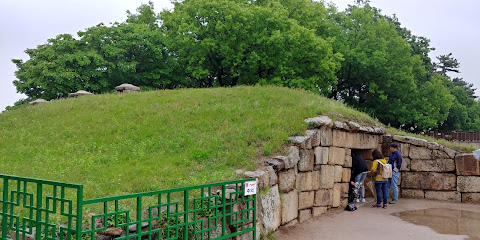
Historic House of the Rich Man Choi, Gyeongju
Explore the historic charm of the House of the Rich Man Choi in Gyeongju, a cultural gem showcasing Korea's traditional architecture and rich history.
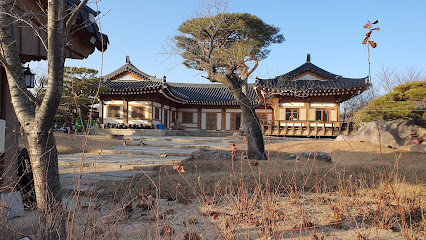
BOKSOONDOGA Rice winery
Explore the rich tradition of Korean brewing at BOKSOONDOGA Rice Winery, where every sip tells a story of culture and craftsmanship.

Seokgatap (Sakyamuni Pagoda)
Explore the serene Seokgatap Pagoda in Gyeongju, a UNESCO World Heritage Site showcasing Korea's rich Buddhist heritage and stunning architectural brilliance.

Essential places to dine
Hilton Gyeongju
Discover unparalleled luxury and cultural richness at Hilton Gyeongju, your gateway to South Korea's historic treasures.

Venzamas
Experience the best of Gyeongju's brunch scene at Venzamas – where innovative cuisine meets local flavors.

Gyeongju Wonjo Kongguk
Experience authentic Korean cuisine at Gyeongju Wonjo Kongguk, famous for its refreshing kongguk noodles and traditional side dishes.

Gyodong Sssambap
Experience authentic Korean Ssambap at Gyodong Sssambap in historic Gyeongju—where tradition meets flavor.

Dosol Maeul
Experience authentic Korean cuisine at Dosol Maeul in Gyeongju – where tradition meets flavor in every dish.

Janggun Amso Sutbul
Experience authentic Korean barbecue at Janggun Amso Sutbul in Gyeongju—where quality meets affordability in every bite.

요석궁 1779
Discover the exquisite flavors of traditional Korean cuisine at 요석궁 1779 in Gyeongju - a culinary gem serving authentic Hanjeongsik.

Ryoko
Indulge in authentic Japanese flavors at Ryoko in Gyeongju - where culinary tradition meets exceptional dining.

Daegu Galbi
Discover the authentic taste of Korean barbecue at Daegu Galbi in Gyeongju – where every meal is an unforgettable experience.

Sukyeong Sikdang
Experience the rich flavors of Korea at Sukyeong Sikdang in Gyeongju-si, where authentic dishes meet warm hospitality.

진수성찬
Discover authentic Korean flavors at 진수성찬 in Gyeongju-si - where tradition meets taste.

양지식당
Discover the essence of Korean cuisine at Yangji Restaurant in Gyeongju—where tradition meets taste.

DOMI Kitchen
Experience the perfect blend of Italian cuisine and family-friendly dining at DOMI Kitchen in Gyeongju.

Pizaok
Savor authentic Italian cuisine at Pizaok in Gyeongju - where every dish tells a story and every visit feels like home.

東里
Savor authentic Korean flavors at Dongri in Gyeongju – where tradition meets taste.
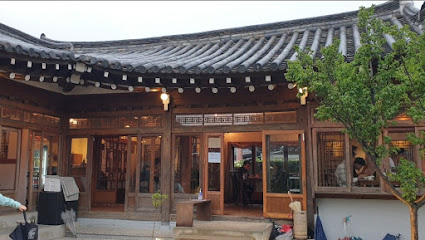
Markets, malls and hidden boutiques
Cheomseongdae Observatory
Explore Cheomseongdae Observatory, Korea's oldest astronomical site, and immerse yourself in centuries of history and celestial wonder.

Donggung Palace & Wolji Pond
Discover the historical beauty of Donggung Palace & Wolji Pond, where ancient architecture meets tranquil waters in Gyeongju's cultural heart.

Gyeongju National Museum
Unveil the rich history of the Silla Kingdom at Gyeongju National Museum, a must-visit cultural landmark in South Korea.

Gyeongju World
Experience the thrill of adventure and the charm of culture at Gyeongju World, a unique theme park in South Korea's historic city.

Seokguram Grotto
Explore the serene beauty of Seokguram Grotto, a UNESCO World Heritage site showcasing exquisite Buddhist artistry in the heart of Gyeongju.

Hwangnidan-gil
Explore the enchanting Hwangnidan-gil in Gyeongju, where traditional Hanoks meet modern culture, creating a unique travel experience.

Gyeongju Gyochon Traditional Village
Discover Gyeongju Gyochon Traditional Village, a cultural gem showcasing Korea's heritage through traditional homes, crafts, and cuisine.

Jungang Market
Explore Jungang Market in Gyeongju for an authentic taste of local culture, delicious street food, and unique shopping experiences.

Cheonmachong
Explore the serene beauty and historical richness of Cheonmachong, a key burial site from Korea's Silla Dynasty in Gyeongju.

Hanwha Resort Gyeongju
Discover relaxation and cultural treasures at Hanwha Resort Gyeongju, where luxury meets the historical richness of South Korea.

Yangdong Folk Village
Explore the timeless beauty of Yangdong Folk Village, where history and culture converge in the heart of South Korea's heritage.
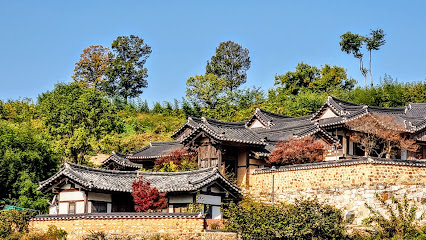
Gyeongju Tower
Explore Gyeongju Tower, where stunning views meet rich history in a serene park setting, perfect for tourists seeking culture and tranquility.

Seongdong Market
Explore the vibrant Seongdong Market in Gyeongju, a culinary and cultural hotspot showcasing local flavors and crafts.

Hwangnyongsa Temple Site
Explore the serene Hwangnyongsa Temple Site, a historic gem of Gyeongju showcasing the grandeur of Korea's Silla Dynasty and its rich Buddhist heritage.

Gyeongju Teddy Bear Museum
Discover the enchanting Gyeongju Teddy Bear Museum, where whimsical exhibits and cultural displays celebrate the beloved teddy bear in a fun, family-friendly environment.

Essential bars & hidden hideouts
Hilton Gyeongju
Experience the perfect blend of luxury and cultural exploration at Hilton Gyeongju, your gateway to Korea's historic treasures.
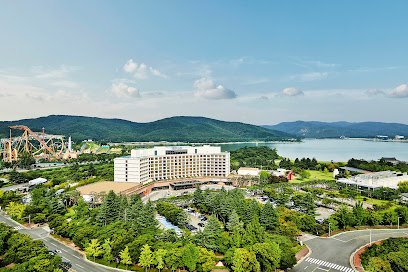
Bar분 (Bar Boon)
Discover the vibrant nightlife at Bar Boon in Gyeongju, where signature cocktails and a lively atmosphere await every evening.

Whasoo Brewery
Discover the essence of craft brewing at Whasoo Brewery in Gyeongju-si, where local flavors and artisanal beers come together in a vibrant atmosphere.

Stillroom
Discover the vibrant nightlife of Gyeongju at Stillroom, where great drinks and a welcoming atmosphere await.

Heuheuheu
Experience the vibrant nightlife of Gyeongju at Heuheuheu, where local charm meets exquisite drinks in a cozy bar atmosphere.
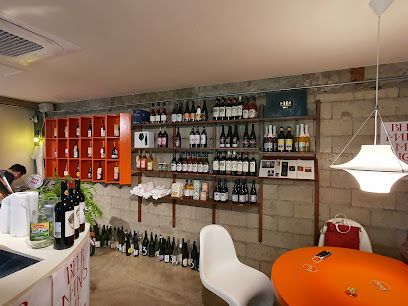
Yesterday, Below
Discover Gyeongju's nightlife at Yesterday, Below - a cozy pub offering local brews, lively entertainment, and a welcoming atmosphere.

Bar Prep
Discover Gyeongju's vibrant nightlife at Bar Prep, where exquisite cocktails and a lively atmosphere create unforgettable moments.
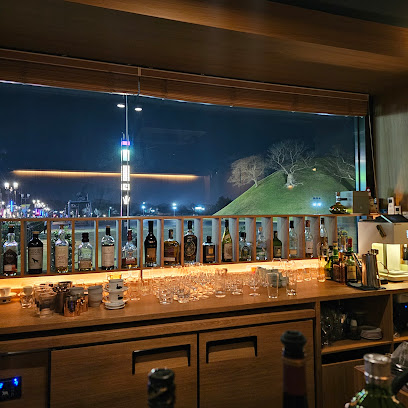
Round2 restaurant & pub
Experience the vibrant nightlife at Round2 Restaurant & Pub in Gyeongju, where delicious food and drinks await in a lively atmosphere.

Yeohaeng
Experience the vibrant atmosphere and local flavors at Yeohaeng, a charming bar in Gyeongju perfect for unwinding after a day of exploration.

Seogs
Discover Seogs, a charming cocktail bar in Gyeongju, offering unique Korean-inspired cocktails in a cozy atmosphere, perfect for tourists.

The Backyard
Experience Gyeongju's nightlife at The Backyard, a vibrant bar offering local flavors and a cozy atmosphere for relaxation and fun.

Local Phrases about Gyeongju Historic Areas
-
- Hello안녕하세요
[ahn-nyeong-ha-se-yo] - Goodbye안녕히 가세요
[ahn-nyeong-hee ga-se-yo] - Yes네
[ne] - No아니요
[a-ni-yo] - Please/You're welcome부탁합니다/천만에요
[bu-tak-ham-ni-da/cheon-man-e-yo] - Thank you감사합니다
[gam-sa-ham-ni-da] - Excuse me/Sorry죄송합니다
[joe-song-ham-ni-da] - How are you?어떻게 지내세요?
[eo-ddeoh-ke ji-nae-se-yo?] - Fine. And you?잘 지내요. 당신은요?
[jal ji-nae-yo. dang-shi-neun-yo?] - Do you speak English?영어 할 수 있어요?
[yeong-eo hal su iss-eo-yo?] - I don't understand이해하지 못해요
[i-hae-ha-ji mot-hae-yo]
- Hello안녕하세요
-
- I'd like to see the menu, please메뉴를 보여주세요
[me-nyu-reul bo-yeo-ju-se-yo] - I don't eat meat고기를 먹지 않아요
[go-gi-reul meok-ji anh-a-yo] - Cheers!건배!
[geon-bae!] - I would like to pay, please결제하고 싶어요
[gyeol-je-ha-go sip-eo-yo]
- I'd like to see the menu, please메뉴를 보여주세요
-
- Help!도와주세요!
[do-wa-ju-se-yo!] - Go away!사라져!
[sa-ra-jyeo!] - Call the Police!경찰을 불러주세요!
[gyeong-chal-eul bul-leo-ju-se-yo!] - Call a doctor!의사를 불러주세요!
[ui-sa-reul bul-leo-ju-se-yo!] - I'm lost길을 잃었어요
[gil-eul ilh-eoss-eo-yo] - I'm ill아파요
[a-pa-yo]
- Help!도와주세요!
-
- I'd like to buy......을(를) 사고 싶어요
[...eul(reul) sa-go sip-eo-yo] - I'm just looking그냥 둘러보고 있어요
[geu-nyang dul-leo-bo-go iss-eo-yo] - How much is it?얼마에요?
[eol-ma-e-yo?] - That's too expensive너무 비싸요
[neo-mu bi-ssa-yo] - Can you lower the price?가격을 깎을 수 있어요?
[ga-geug-eul kka-keul su iss-eo-yo?]
- I'd like to buy......을(를) 사고 싶어요
-
- What time is it?지금 몇 시에요?
[ji-geum myeot si-e-yo?] - It's one o'clock한 시에요
[han si-e-yo] - Half past (10)열 시 반
[yeol si ban] - Morning아침
[a-chim] - Afternoon오후
[o-hu] - Evening저녁
[jeo-nyeok] - Yesterday어제
[eo-je] - Today오늘
[o-neul] - Tomorrow내일
[nae-il] - 1일
[il] - 2이
[i] - 3삼
[sam] - 4사
[sa] - 5오
[o] - 6육
[yuk] - 7칠
[chil] - 8팔
[pal] - 9구
[gu] - 10십
[ship]
- What time is it?지금 몇 시에요?
-
- Where's a/the...?...이 어디에 있어요?
[...i eo-di-e iss-eo-yo?] - What's the address?주소가 뭐에요?
[ju-so-ga mwo-e-yo?] - Can you show me (on the map)?지도로 보여주세요
[ji-do-ro bo-yeo-ju-se-yo] - When's the next (bus)?다음 버스는 언제에요?
[da-eum beo-seu-neun eon-je-e-yo?] - A ticket (to ....)표 하나 주세요 (...로)
[pyo ha-na ju-se-yo (...ro)]
- Where's a/the...?...이 어디에 있어요?
History of Gyeongju Historic Areas
-
Gyeongju, known as 'Seorabeol' during ancient times, served as the capital of the Silla Kingdom from 57 BCE to 935 CE. The Silla Dynasty is recognized for unifying the Korean Peninsula, and Gyeongju was the political, economic, and cultural center of the kingdom. The city’s historical significance is evident in its numerous ancient sites, including royal tombs, palaces, and temples.
-
Bulguksa Temple, a UNESCO World Heritage site, is one of the most famous Buddhist temples in South Korea. Constructed during the Silla Dynasty in 774 CE, it embodies the architectural excellence and spiritual devotion of the period. The temple complex includes Dabotap and Seokgatap pagodas, which are considered masterpieces of Buddhist art.
-
Seokguram Grotto, another UNESCO World Heritage site, is a hermitage and part of the Bulguksa temple complex. Built in the 8th century, it houses a monumental statue of the Buddha, surrounded by bodhisattvas and guardians. The grotto is a testament to the advanced engineering and artistic skills of the Silla people.
-
Cheomseongdae is the oldest existing astronomical observatory in Asia, constructed during the reign of Queen Seondeok (632-647 CE). The 9.17-meter high stone structure was used for stargazing and signifies the advanced scientific understanding of the Silla Dynasty. The observatory's design, featuring 365 stones, is believed to represent the days of the year.
-
Anapji Pond, also known as Wolji, was built in 674 CE by King Munmu to commemorate the unification of the Korean Peninsula under Silla. The artificial pond, surrounded by pavilions and gardens, served as a royal leisure site. Recent excavations have uncovered numerous artifacts, offering insights into the royal lifestyle and culture of the time.
-
The Royal Tombs of Gyeongju, scattered across the city, are burial mounds of Silla kings and nobility. These tombs, such as the Cheonmachong and Hwangnamdaechong, contain valuable relics, including gold crowns, pottery, and weaponry. The tombs provide a glimpse into the burial customs and material wealth of the Silla elite.
-
The Gyeongju National Museum houses a vast collection of artifacts from the Silla Dynasty, including gold jewelry, pottery, and stone sculptures. The museum's exhibits offer comprehensive insights into the history, culture, and artistic achievements of ancient Gyeongju, making it an essential stop for understanding the city’s historical significance.
-
Namsan Mountain, often referred to as a 'museum without walls,' is dotted with ancient relics, including Buddha statues, pagodas, and temple ruins. It was a sacred site during the Silla period, and its numerous archaeological treasures reflect the spiritual and cultural heritage of the era. Namsan's trails offer both hiking opportunities and historical exploration.
Gyeongju Historic Areas Essentials
-
Gyeongju Historic Areas are located in Gyeongsangbuk-do province in South Korea. The nearest international airports are Gimhae International Airport in Busan and Incheon International Airport in Seoul. From Busan, you can take a KTX (Korea Train Express) to Singyeongju Station, which takes about 30 minutes. From Seoul, the KTX takes approximately 2 hours to reach Singyeongju Station. Buses and taxis are available from the station to various historic sites.
-
Gyeongju is well-connected by public transportation. Local buses are frequent and cover most tourist spots. Taxis are also readily available and can be a convenient option, especially if you're traveling in a group. For a more flexible itinerary, consider renting a bicycle or car. Gyeongju's bike rental services offer a great way to explore the city's historic sites at your own pace.
-
The official currency of South Korea is the Korean Won (KRW). Credit and debit cards are widely accepted in Gyeongju. However, it's advisable to carry some cash for smaller establishments, local markets, and street vendors. ATMs are plentiful, especially in tourist areas, but ensure your card is compatible with South Korean banking systems.
-
Gyeongju is generally a safe destination for tourists. Violent crime is rare, but petty theft can occur, particularly in crowded areas. Always keep an eye on your belongings and avoid leaving valuables unattended. There are no specific high-crime areas targeting tourists, but staying vigilant is always recommended. At night, stick to well-lit and populated areas.
-
In case of an emergency, dial 119 for medical or fire emergencies and 112 for police assistance. Most operators speak basic English. The local police station and hospitals are well-equipped to handle emergencies. It is advisable to have travel insurance that covers medical emergencies. Pharmacies are widely available for minor health issues, and many staff members can assist in English.
-
Fashion: Do dress modestly, especially when visiting religious sites. Avoid overly revealing clothing. Religion: Do respect local customs and traditions. When visiting temples, dress modestly and remove your shoes before entering. Public Transport: Do be respectful and give up your seat to elderly passengers. Don’t talk loudly or make phone calls on public transport. Greetings: Do greet people with a slight bow or a handshake. A smile and a polite 'Annyeong haseyo' (Hello) go a long way. Eating & Drinking: Do try local delicacies and be gracious when offered food. Don’t leave chopsticks sticking upright in a bowl of rice, as it resembles a funeral ritual.
-
To experience Gyeongju like a local, visit the traditional markets such as Gyeongju Jungang Market, where you can buy fresh produce and local snacks. Participate in a tea ceremony or take a pottery class to understand the local culture better. Engaging with locals can provide unique insights into the city's history and traditions. Don’t miss the opportunity to visit lesser-known sites like the Oreung Royal Tombs and the Gyeongju Hyanggyo Confucian School.
Trending Landmarks in Gyeongju Historic Areas
-
Cheomseongdae Observatory
-
Donggung Palace & Wolji Pond
-
Bulguksa Temple
-
Gyeongju National Museum
-
Gyeongju World
-
Woljeonggyo Bridge
-
Seokguram Grotto
-
Hwangnidan-gil
-
Gyeongju Gyochon Traditional Village
-
Hilton Gyeongju
-
Cheonmachong
-
Daereungwon Tomb Complex
-
Yangdong Folk Village
-
Daldongnae of Old Times
-
Gyeongju Tower
Nearby Cities to Gyeongju Historic Areas
-
Things To Do in Pohang
-
Things To Do in Ulsan
-
Things To Do in Daegu
-
Things To Do in Busan
-
Things To Do in Andong
-
Things To Do in Daejeon
-
Things To Do in Jeonju
-
Things To Do in Suncheon
-
Things To Do in Gwangju
-
Things To Do in Suwon
-
Things To Do in Chuncheon
-
Things To Do in Fukuoka
-
Things To Do in Seoul
-
Things To Do in Mokpo
-
Things To Do in Incheon













